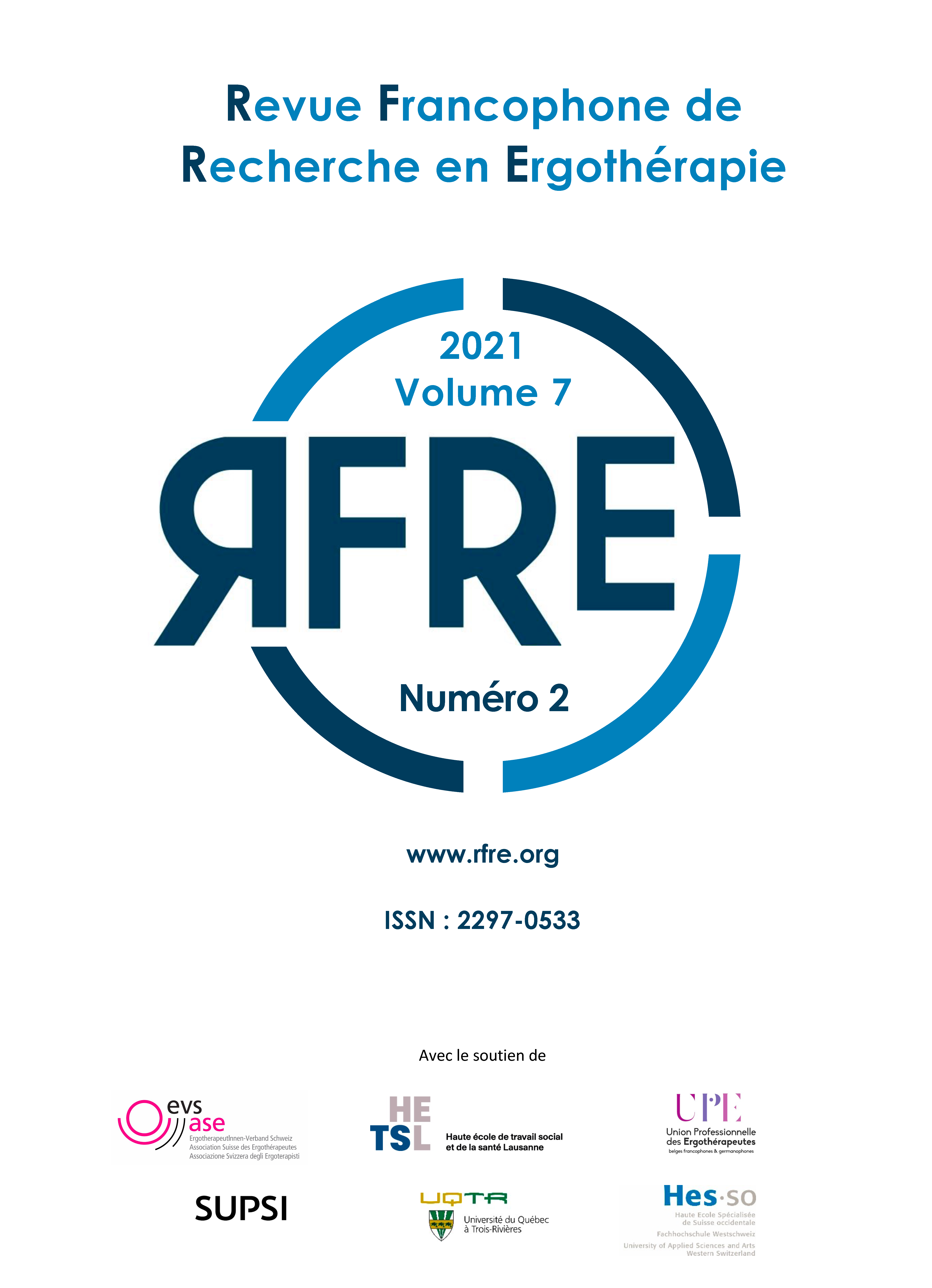Identification of the elders’ needs and ressources in Fleurimont, Québec, Canada : towards occupational therapists’ interventions supporting aging in place
DOI:
https://doi.org/10.13096/rfre.v7n2.171Abstract
The aging of the population creates several challenges, particularly for helping older adults to age in place. Since an increase is anticipated, it is important to better understand the needs of aging in place of older adults, especially for residents in Fleurimont (District of Sherbrooke, Quebec, Canada). A better knowledge of the resources is also required. This study aimed to identify 1) the needs of aging in place for the older adults in Fleurimont and 2) the resources available. An action research was used with 45 older adults and relatives from the 9 communities of Fleurimont. Five key informant forums were realized using a semi-structured interview guide. An intra- and inter-case thematic content analysis was conducted using a mixed coding grid. Aged between 64 and 94 (76.2±7.6), most older adults and relatives were women, rated their health as good or excellent, and wanted to stay at home as long as possible. Associated with a decrease in their physical abilities, the main needs concerned housing, mobility, personal care and leisure. Although they were numerous, the resources were little known. A list of various needs and resources has been developed and will, ultimately, contribute to better identify what older adults need and implement further solutions adapted to aging in place. Studies on aging in place must continue for clients in situations of vulnerability, such as older adults confined to their homes or with precarious health.
Downloads
Published
How to Cite
Issue
Section
License
Copyright (c) 2021 Fabienne Labonté, Marina Sirois, Amélie Roberge , Marie-Ève Ravenelle , Reem Hussein , Mélanie Levasseur

This work is licensed under a Creative Commons Attribution-NonCommercial-ShareAlike 4.0 International License.












